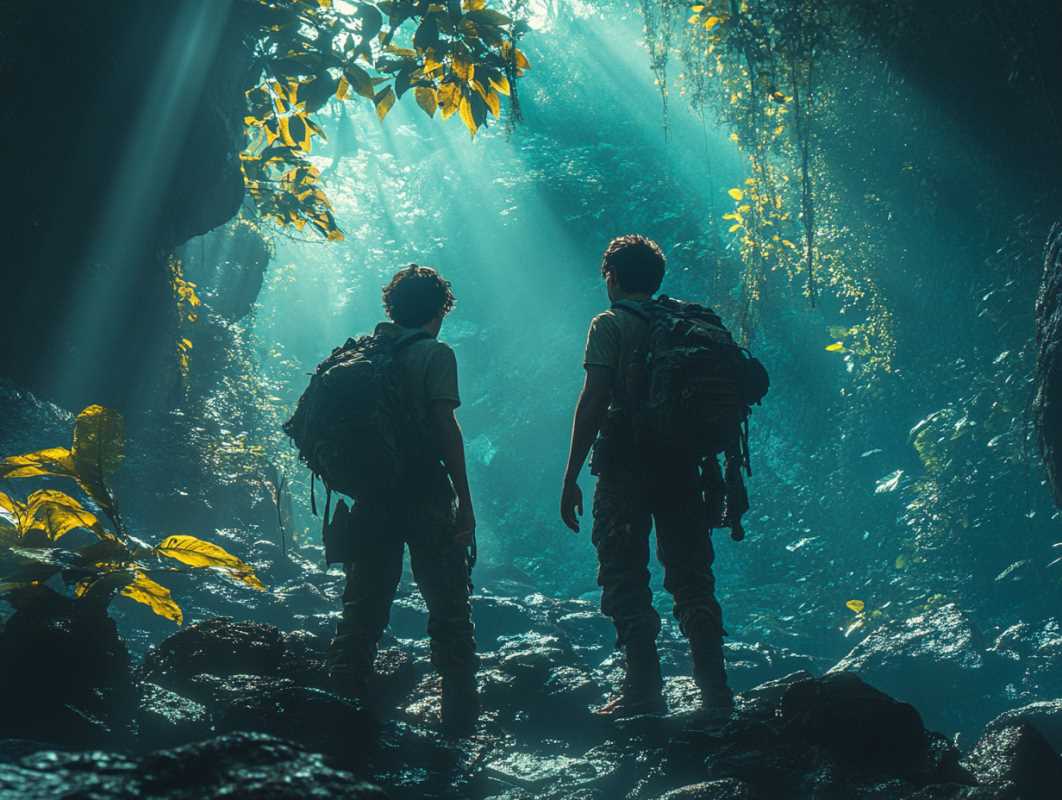Treasure hunting has long captured the imagination of adventurers, conjuring images of pirate maps, buried chests, and untold riches. While the era of swashbuckling pirates is behind us, the thrill of the hunt remains alive. Today’s treasure seekers use cutting-edge techniques alongside time-tested methods to unearth hidden treasures.
Modern treasure hunting goes beyond finding gold and jewels. It encompasses archaeological artifacts, lost shipwrecks, rare collectibles, and even digital assets. From high-tech gadgets to ingenious strategies, adventurers are embracing a new age of exploration that combines technology, creativity, and determination.
Metal Detectors
Metal detectors have been a staple of treasure hunting for decades, but recent advancements have elevated their capabilities. No longer simple tools that beep when they detect metal, modern detectors are equipped with features like ground-penetrating radar, digital displays, and adjustable frequency settings.
The versatility of metal detectors makes them indispensable for various types of treasure hunting. Hobbyists often scour beaches, parks, and historical sites, searching for coins, jewelry, or relics. Professional treasure hunters use specialized detectors to locate artifacts buried deep underground or even submerged in water.
One of the most exciting developments is the advent of underwater metal detectors. These waterproof devices allow divers to explore ocean floors, riverbeds, and lakeshores, where centuries of shipwrecks and forgotten treasures await discovery. For example, treasure recovered from the 1715 Spanish Fleet off Florida's coast has included gold coins, jewelry, and other valuables lost in a devastating hurricane.
Metal detectors have also become smarter. With GPS integration and smartphone connectivity, users can map their finds, share locations, and collaborate with other enthusiasts. This blend of tradition and technology ensures that metal detecting remains a cornerstone of treasure hunting.
Drone Technology
Drones have revolutionized treasure hunting by providing a bird’s-eye view of landscapes, enabling adventurers to scout locations quickly and efficiently. These flying marvels are equipped with high-resolution cameras, thermal imaging sensors, and even LIDAR (Light Detection and Ranging) technology, making them ideal for identifying hidden sites and anomalies in the terrain.
For treasure hunters, drones are particularly valuable in remote or hard-to-reach areas. They can survey dense forests, rugged mountains, and expansive deserts, capturing data that might otherwise take days or weeks to collect. By analyzing drone footage, hunters can pinpoint potential dig sites, reducing the time and effort required to find treasures.
Drones have proven especially useful in archaeological treasure hunting. In Egypt, researchers have used LIDAR-equipped drones to uncover ancient ruins buried beneath sand. Similarly, in Central America, drones have helped locate lost Mayan cities hidden within dense jungle canopies.
Recreational treasure hunters are also leveraging drones for creative pursuits. For instance, metal detector enthusiasts use drones to scan wide areas for metallic objects before honing in on specific spots. As drone technology becomes more accessible and affordable, its role in treasure hunting is only set to grow.
Magnet Fishing
Magnet fishing is a treasure-hunting technique that combines simplicity with the allure of the unknown. adventurers cast their lines into rivers, lakes, and canals using a powerful magnet attached to a rope, hoping to pull up metal objects hidden beneath the water's surface.
The appeal of magnet fishing lies in its unpredictability. Hunters might recover rusty tools, discarded safes, or even historical artifacts. In some cases, magnet fishers have stumbled upon surprising finds, such as firearms, coins, and even bicycles.
Urban waterways are particularly fertile ground for magnet fishing. These areas often harbor centuries of lost or discarded items, from old coins to industrial relics. However, participants should be mindful of local laws and regulations, as some finds may require reporting to authorities.
Safety and environmental consciousness are also critical in magnet fishing. Hunters should handle objects carefully, as they may be sharp or hazardous, and ensure they leave the area cleaner than they found it. By combining adventure with environmental stewardship, magnet fishing offers a unique and rewarding way to hunt for treasure.
Geocaching
Geocaching has brought treasure hunting into the 21st century, transforming it into a global game that combines outdoor adventure with digital technology. Participants use GPS-enabled devices or smartphones to locate hidden containers, or “geocaches,” placed by other enthusiasts in various locations worldwide.
Each geocache contains a logbook for finders to sign and, often, small trinkets or items for trade. The thrill of geocaching lies not only in finding the cache but also in solving puzzles, deciphering clues, and navigating challenging terrains.
Geocaching fosters a sense of community among participants. Websites and apps provide platforms for geocachers to share their experiences, exchange tips, and organize events. These gatherings, often called “Cache In, Trash Out” events, encourage environmental conservation by combining treasure hunting with litter cleanup efforts.
For modern adventurers, geocaching offers an accessible and family-friendly way to experience the thrill of the hunt. With millions of caches hidden across the globe, every outing holds the potential for discovery and excitement.
Underwater Exploration
The oceans, covering more than 70% of the Earth’s surface, are a treasure hunter’s dream - and perhaps their greatest challenge. Beneath the waves lie shipwrecks laden with gold, silver, and historical artifacts, waiting to be uncovered by those daring enough to dive deep.
Underwater treasure hunting requires specialized equipment and skills, including diving certifications, sonar systems, and remotely operated vehicles (ROVs). These tools enable hunters to locate and recover treasures while minimizing risks.
One famous example of underwater treasure-hunting success is the discovery of the Nuestra Señora de Atocha, a Spanish galleon that sank off the Florida Keys in 1622. In 1985, treasure hunter Mel Fisher and his team recovered an astonishing haul of gold, silver, and emeralds, valued at hundreds of millions of dollars.
Today, advancements in technology have made underwater treasure hunting more accessible. Miniature ROVs equipped with cameras and manipulators allow explorers to reach depths previously unattainable. Sonar imaging systems provide detailed maps of underwater landscapes, helping hunters identify promising sites.
Despite its allure, underwater treasure hunting comes with challenges, including legal and ethical considerations. Many countries have strict regulations governing the recovery of historical artifacts, and some shipwrecks are protected as cultural heritage sites. For modern adventurers, balancing the thrill of discovery with respect for history and the environment is paramount.
The Role of Research and Planning
Behind every successful treasure hunt lies meticulous research and planning. While the allure of stumbling upon riches by chance is romantic, real treasure hunters know that preparation is key.
The first step is identifying promising locations. This often involves studying historical records, maps, and archival documents to uncover clues about where treasures might be hidden. For example, old ship manifests, diaries, or tax records can provide valuable insights into lost treasures.
Modern technology has made research more efficient. Online databases, digital archives, and even crowd-sourced platforms allow treasure hunters to access a wealth of information from anywhere in the world. Tools like Google Earth and satellite imagery enable detailed exploration of potential sites before setting foot on the ground.
In addition to historical research, hunters must consider practical factors such as permissions, safety precautions, and equipment requirements. By combining knowledge with preparation, today’s treasure hunters increase their chances of turning dreams into reality.
Ethical Treasure Hunting in the Modern Era
As treasure hunting grows in popularity, so do discussions about its ethical implications. Adventurers must navigate the fine line between personal discovery and preserving cultural heritage.
Artifacts recovered from historical sites often hold significant value beyond their material worth. They provide insights into past civilizations, cultures, and events. As such, many countries have laws regulating the excavation and ownership of treasures, particularly those of archaeological significance.
Responsible treasure hunters prioritize respect for history and the environment. They seek necessary permits, collaborate with archaeologists, and follow ethical guidelines to ensure their pursuits benefit society as a whole.
Treasure hunters are increasingly aware of their role as stewards of the environment. Whether cleaning up waterways during magnet fishing or minimizing disruptions to marine ecosystems during underwater expeditions, ethical practices are essential to sustainable treasure hunting.
The Unstoppable Allure of the Hunt
Treasure hunting is a captivating pursuit combining curiosity, adventure, and ingenuity. Modern techniques, from drones to geocaching, have expanded the possibilities, enabling anyone with a sense of wonder to embark on a journey of discovery.
For today’s adventurers, the true treasure often lies in the journey itself. The thrill of exploration, the joy of uncovering hidden stories, and the connections formed along the way are rewards that rival the glitter of gold.
- Modernized metal detectors with GPS and advanced imaging
- Drones for scouting remote locations and archaeological finds
- Accessible treasure hunting through geocaching and magnet fishing
- Underwater exploration for shipwrecks and marine treasures
- Emphasis on ethical practices and environmental stewardship
With the right tools, preparation, and respect for history, the possibilities for modern treasure hunting are endless. Whether it’s a hidden cache in your neighborhood or a centuries-old shipwreck, the spirit of discovery continues to inspire adventurers around the globe.
 (Image source: Midjourney)
(Image source: Midjourney) 





